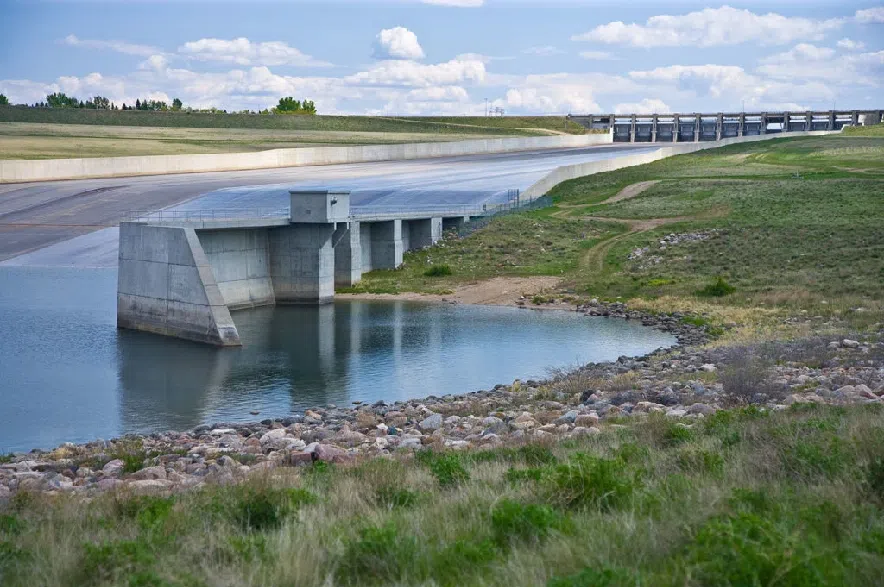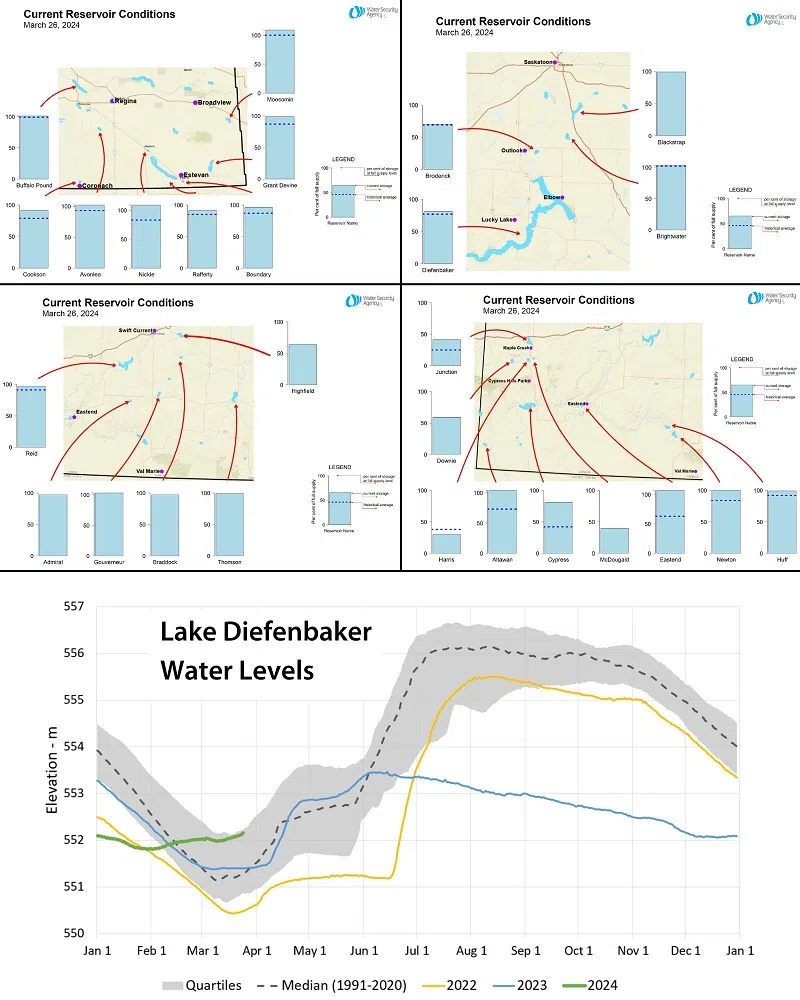Most of Saskatchewan’s reservoirs are brimming with water — or will be — when summer arrives.
However, the Water Security Agency (WSA) said in an update Wednesday that six of 45 major reservoirs in the province probably won’t completely fill, and most of those bodies of water are in southwestern Saskatchewan.
That area was the most severely hit when regions of the province dealt with drought-like conditions in 2023.
In its release Wednesday, the WSA said 33 out of 45 major reservoirs are nearly full or are expected to fill, while another six are between 70 and 90 per cent full and still filling. The other six may not fill up as the spring progresses.
Shawn Jaques said one reservoir near Maple Creek — Junction Reservoir — was only half full.
Jaques said drinking water is the first priority out of these reservoirs and didn’t foresee any problems in that regard. He said if there are problems with levels, then the WSA would have to talk to irrigators about reducing how much they use.
“It remains to be seen what happens over the next few weeks here leading up to that irrigation season,” said Jaques.
With potentially lower flows from upriver, he also said some communities that get their water directly from the river could see problems with their intakes, but the WSA is working with them.
In preparation for possible dry conditions, the agency took precautions over the winter when it came to the province’s largest reservoir, Lake Diefenbaker.
The WSA said it deployed a “conservative operating plan” at the lake, which addresses more than 60 per cent of the province’s water supply needs.
The WSA normally releases water from the lake during the winter to prepare for spring runoff, but this winter, it cut its outflows by more than half – from between 220 and 240 cubic metres per second to between 60 and 100 cubic metres per second.
When April started, Lake Diefenbaker was more than a metre higher than it was at this time last year, and more than 1.5 metres higher than the same time in 2022.
In late February, the WSA’s preliminary spring runoff suggested the province will see below-normal to well-below-normal runoff in most areas.
In its update, the agency said snowpack conditions ranged from below normal to well-below normal over the winter. It’s unknown how the recent snowstorms that hit Saskatchewan will affect the snowpack or the runoff.
“While runoff conditions can change during late winter and spring, WSA will continue to monitor moisture and forecasted weather patterns and adjust operating plans accordingly,” the release said.












